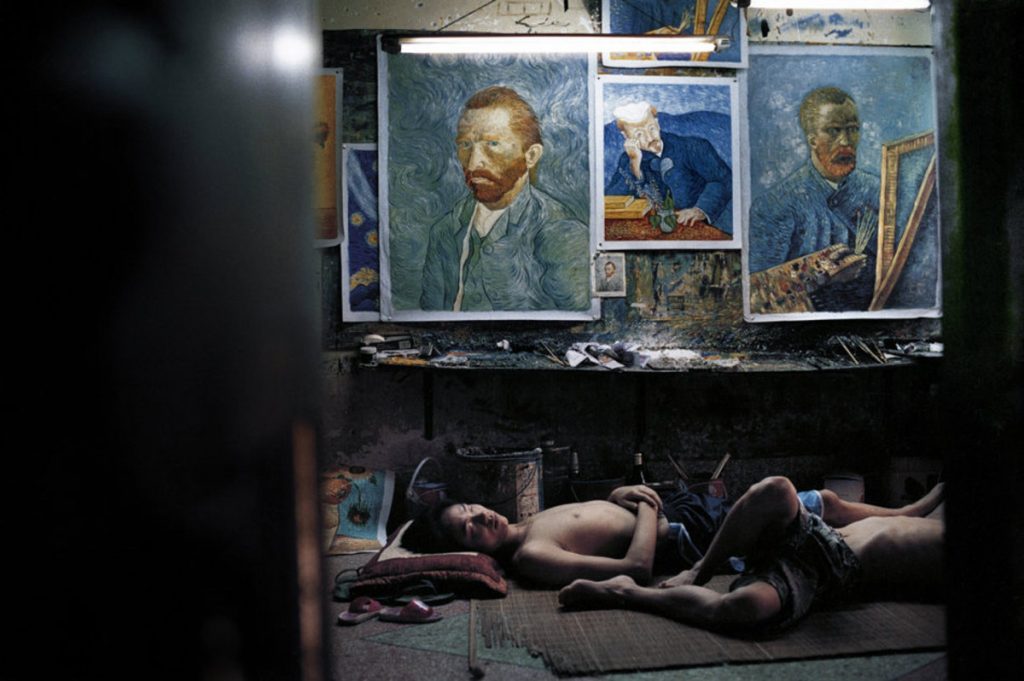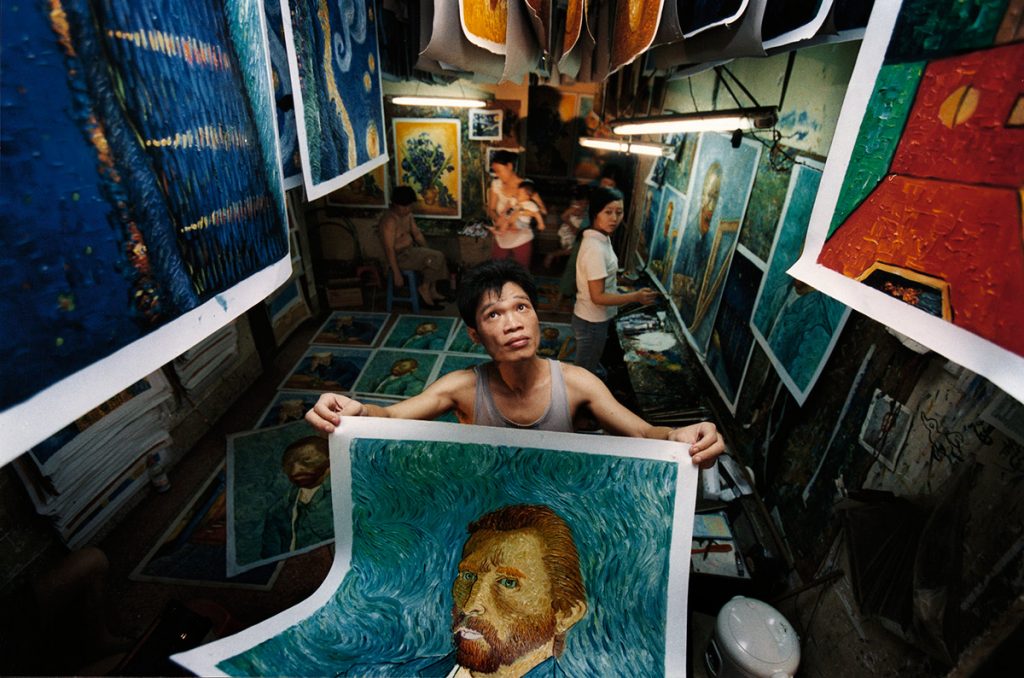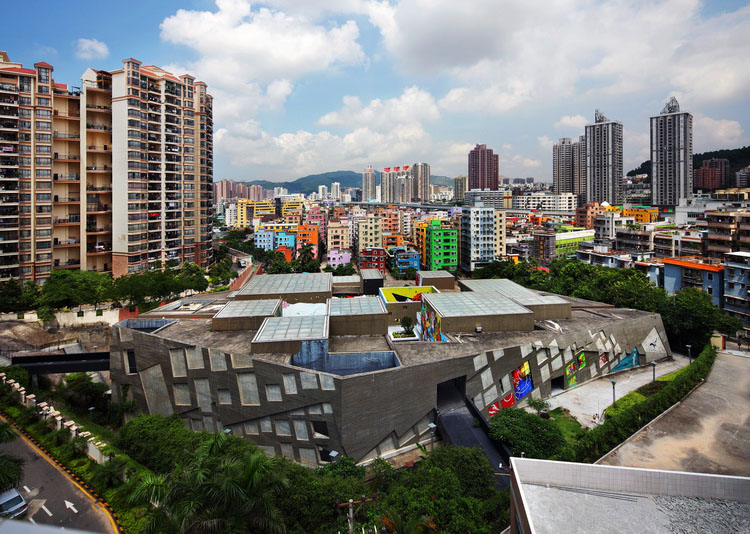On the outskirts of Shenzhen, Dafen Village is best known for its reproduction of oil painting masterpieces. Since 1989, because of its ideal geographical location, Dafen has developed into an adept market attracting migrant workers and foreign investment. In the early twenty-first century, however, to accommodate the shrinking export-oriented economy and increased labor cost, Dafen shifts into an original artistic creation phase. This article explores the “Made in China” phase and “Created in China” phase of Dafen through visual illustrations.

The “Made in China” phase of Dafen features a labor-intensive industry and harsh living conditions for migrant workers. The photographs captured in reproduction studios identify the characteristics of Dafen in this phase. Like assembly lines in industrial factories, the workroom appears to be murky and suffocating under the gloomy light and crowded space. In the foreground, shirtless workers rest with barely any bedding on the floor. The broken mat and their skinny appearance indicate the harsh living conditions in Dafen. The disorganized painting brushes and pigments above them further reveal the messy working environment of this labor-intensive industry. With endless orders for reproducing paintings, there is no time to clean or set up a sanitized working environment. Besides, the glowing light and the juxtaposed space between the art pieces in the background and the workers resting in the foreground show the intense working pace. Workers sleep under the glowing light tube as if they have to return to work once they wake up even at midnight. (sleep under the watchful gaze of Van Gogh)

Most workers work in private enterprise that incorporates family members in one household. That means husband, wife, and even children all contribute to the reproducing industry in Dafen. This photograph shows a common Dafen working studio, which also functions as a living space for the family. While the wife is painting a self-portrait of Van Gogh in the middle ground, the husband organizes and hangs up the reproduced masterpieces in the foreground. The rice cooker on the edge of this photograph indicates that this is also a dining place for the family. In the background, uncles and aunts are bustling around to look after the children. To avoid damaging the art pieces, aunts hold children in their arms when examining the art pieces. All the paintings on the floor and walls are meticulously reproduced as one can barely distinguish them from the original masterpieces. The private enterprise and harsh living environment thus signify the economic identity of Dafen’s labor-intensive painting-reproduction industry. (it is interesting to see woman as the “artist” in the middle ground)


As time goes by, both the government and workers themselves realize the lack of cultural identity for Dafen. From there, Dafen moves into the “Created in China” phase. To attract young artists and students to contribute to the creativity of Dafen, residences and studios for migrant workers are repainted into colorful blocks forming a contrast with the monotonous high-rise buildings in the background. The government funds the construction of the Dafen Art Museum, which features modern architectural design using neutral colors. The unconventional designed pattern of the museum marks the breakthrough of Dafen from its reproduction tradition. Through the original paintings and sculptures around the modern-looking museum, Dafen gains its unique artistic identity. (transition from made in China to created in China could be more complex and difficult) Furthermore, the organized brushes in this studio in Dafen indicate that the private working space also becomes more sanitized as painters pursuing quality over quantity. All the seven paintings on the wall are original creations. (detailed observations needed here) This vibrant creating culture has become a trend in Dafen today.
Through the transition of identity, Dafen represents a potential for China to transform its industrial zones into culture zones with sustainable development.
